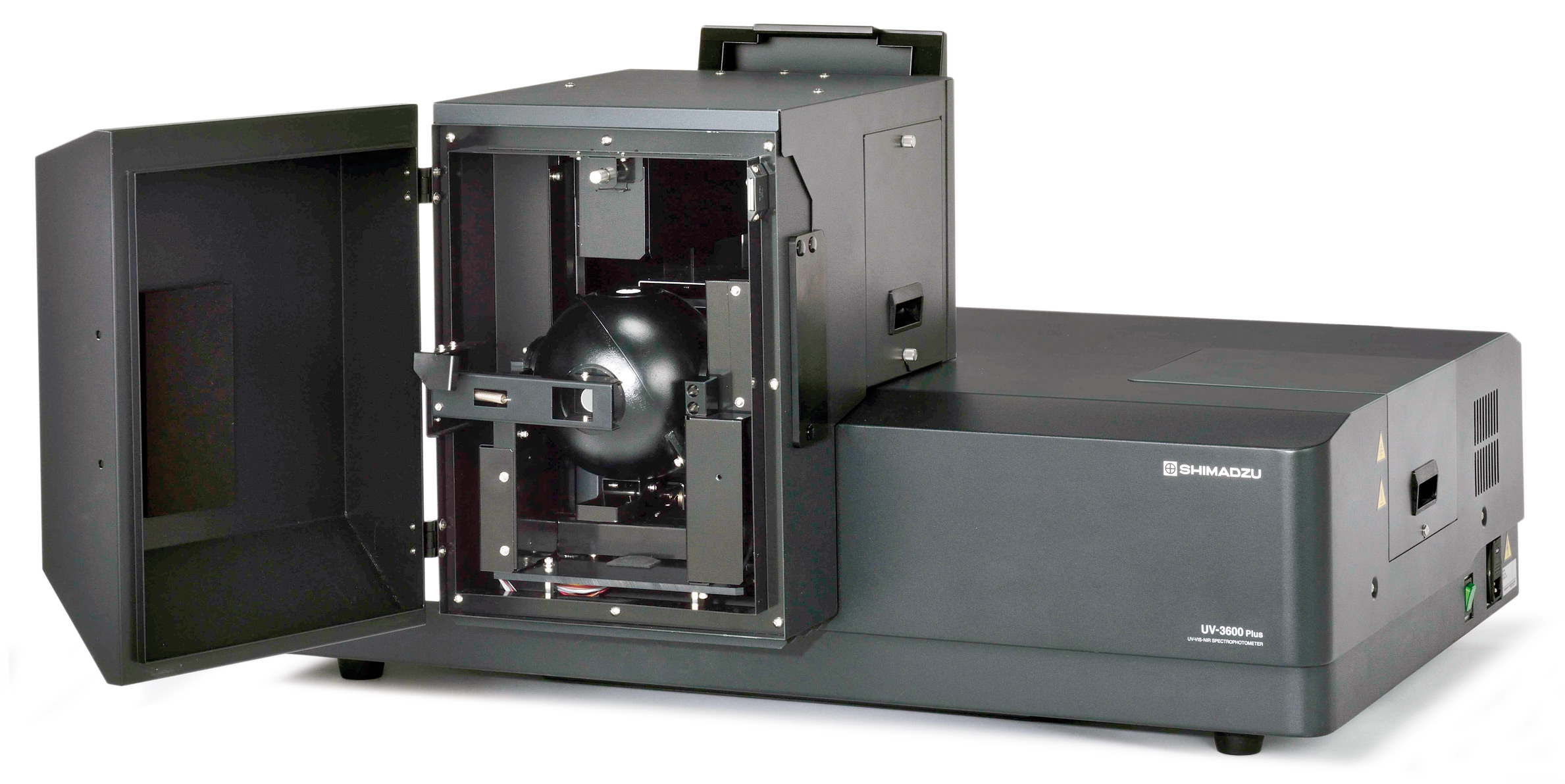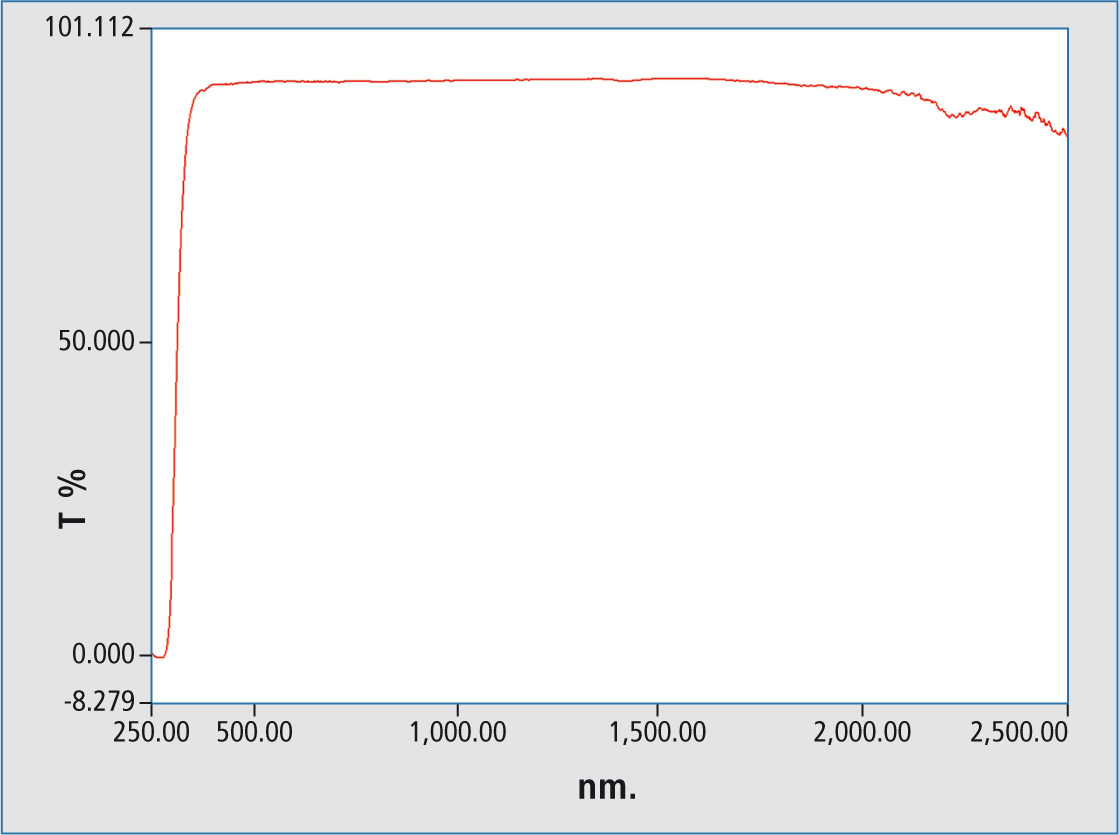New solution for the UV-VIS-NIR range
ISR-1503 series with large integrating sphere and three detectors in two white standard versions
Inspired by the successful concept of the triple-detector analytics for the UV-VIS-NIR range, the large integrating sphere of the Shimadzu UV-3600 Plus series has been redesigned. It has a diameter of 150 mm, and it is made of either BaSO4 or Spectralon®. It integrates three detectors that can be jointly controlled over the entire measuring range: a PMT (photomultiplier tube), an InGaAs detector and a PbS detector.
In comparison with the predecessor model, its design has a more spherical shape in order to realize an aperture ratio of less than 3 % at 0° reflectance, even in the presence of a third detector. This way, the sphere meets the requirements for applications with a low aperture ratio. This parameter is specified by national and international standard methods such as EN, ASTM and JISZ8722 “Methods of color measurement – Reflecting and transmitting objects.”
Two versions of the ISR-1503 are available:
- the ISR-1503 coated with BaSO4
- the ISR-1503F coated with Spectralon (Teflon), which does not take up any moisture. This is an advantage for the NIR range, which sensitively reacts to the presence of surface-bound water. The near-infrared range does not exhibit any absorption of water, as can occur in barium sulfate measurements in this measuring range, when the sample is not embedded in BaSO4.
 Figure 1: View of the ISR-1503
Figure 1: View of the ISR-1503
High measurement stability
The 150 mm integrating sphere is exceptionally well suited for samples with strong light scattering and uneven and rough surfaces. The large sphere collects the strongly reflected light and generates high measurement stability without being too strongly influenced by surface structures.
Due to the design of the sphere, it is possible to place the sample onto the sphere horizontally for transmittance measurements. For reflectance measurements under an angle of incidence of 0° or 8°, the sample can also be put alongside of the sphere (vertically) or under the sphere (horizontally). This way, different physical properties can be measured, such as total transmittance, relative directed reflectance and diffuse reflectance of the sample under investigation.
Properties:
- Wavelength range: 250 to 2300 nm
- Integrating sphere: 150 mm internal diameter
- Detector: integrated PMT, InGaAs and PbS detectors
- Sample positioning: transmittance, 0° reflectance – horizontal; 8° reflectance – vertical
- Aperture ratio: reflectance measurement (0°) 3 %
- Angle of incidence: 0°/8°
- Material of the sphere:
ISR-1503: BaSO4
ISR-1503F: Spectralon (Teflon)
Solar glass for photovoltaic thermal solar collectors
Reflectance spectra of solid materials like powders, paper and textiles can be measured using the ISR-1503 series. Transmittance measurements of liquids and transparent solid materials can be carried out.
For solar glass, structures are applied onto the glass surface. In one method, specially designed moulding rollers are used to stamp patterns on both sides of the glass surface. The structures on the surface must ensure a high solar transmittance factor for perpendicular irradiation.
In addition, a minimum loss of reflectance for angles of incidence of sunlight that are different from the perpendicular is required. This is specified as the angular factor. A high angular factor yields a good energy production balance.
Shown here is the measurement of a double-sided structured glass with a layer thickness of approximately 5 mm. The measurement was carried out in the transmittance mode (figure 2). The transmittance baseline is at 92 % transmittance. This corresponds to the luminous efficiency that is measured with flat glass in direct transmittance mode. Flat glass loses approximately 4 % transmittance on each surface under the condition of direct transmittance.
 Figure 2: UV-VIS-NIR spectrum of a structured glass measured with the ISR-1503F
Figure 2: UV-VIS-NIR spectrum of a structured glass measured with the ISR-1503F
Conclusion
Using the 150 mm-diameter integrating sphere, the determination of the characteristics of a structured glass sample is simple and fast. Combining three detectors within the integrating sphere allows measurements up to the NIR range and also allows for the determination of heat permeability. Various transmittance and reflectance parameters can be determined using the ISR-1503.The aperture ratio allows for stable measurements of the structured surfaces.